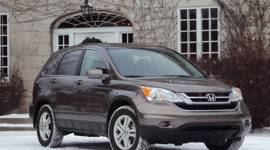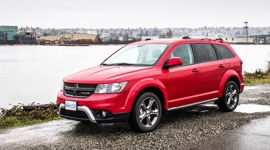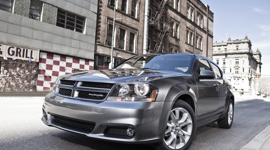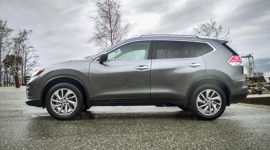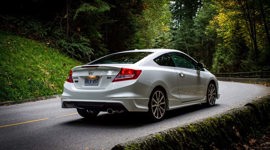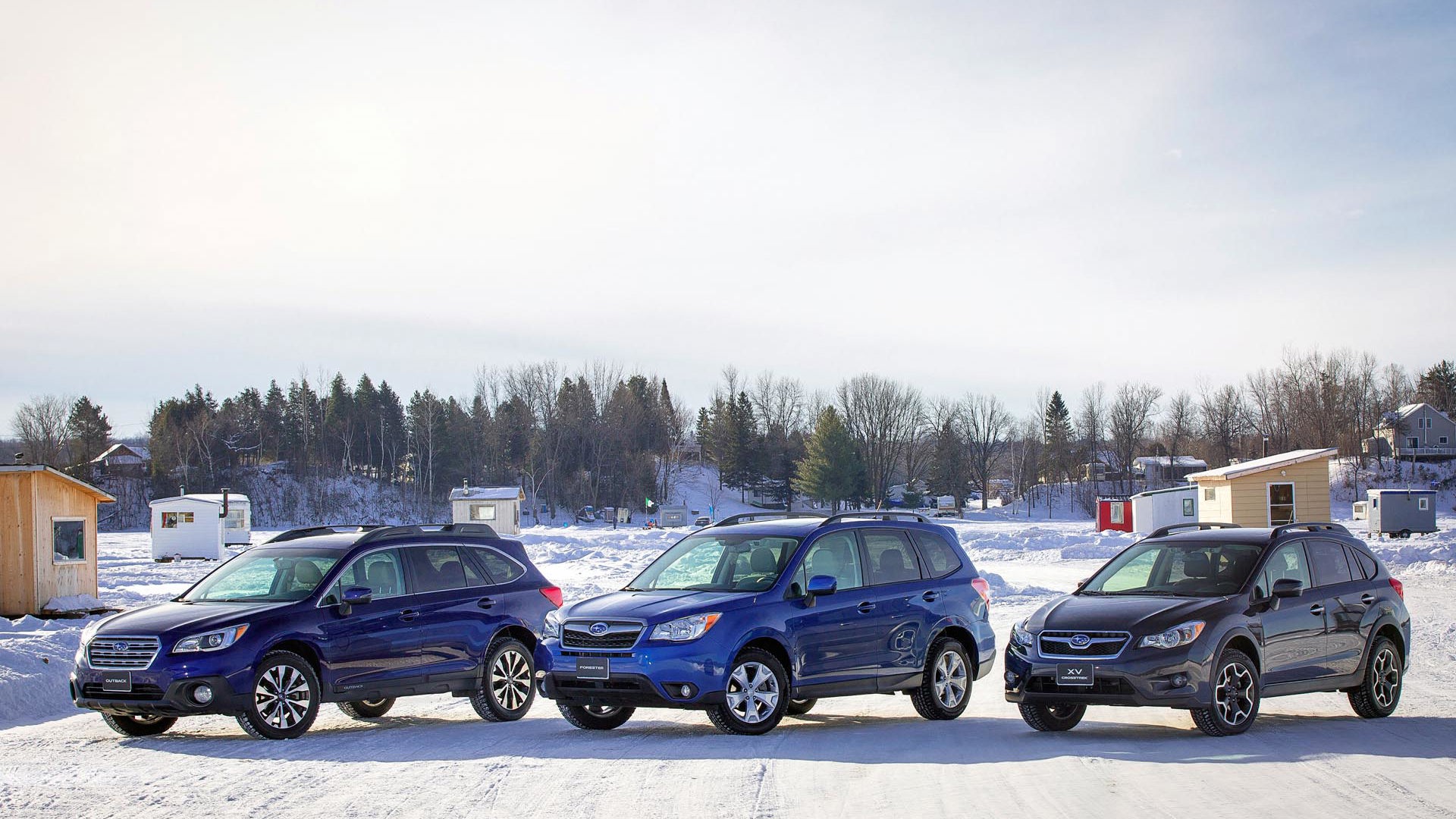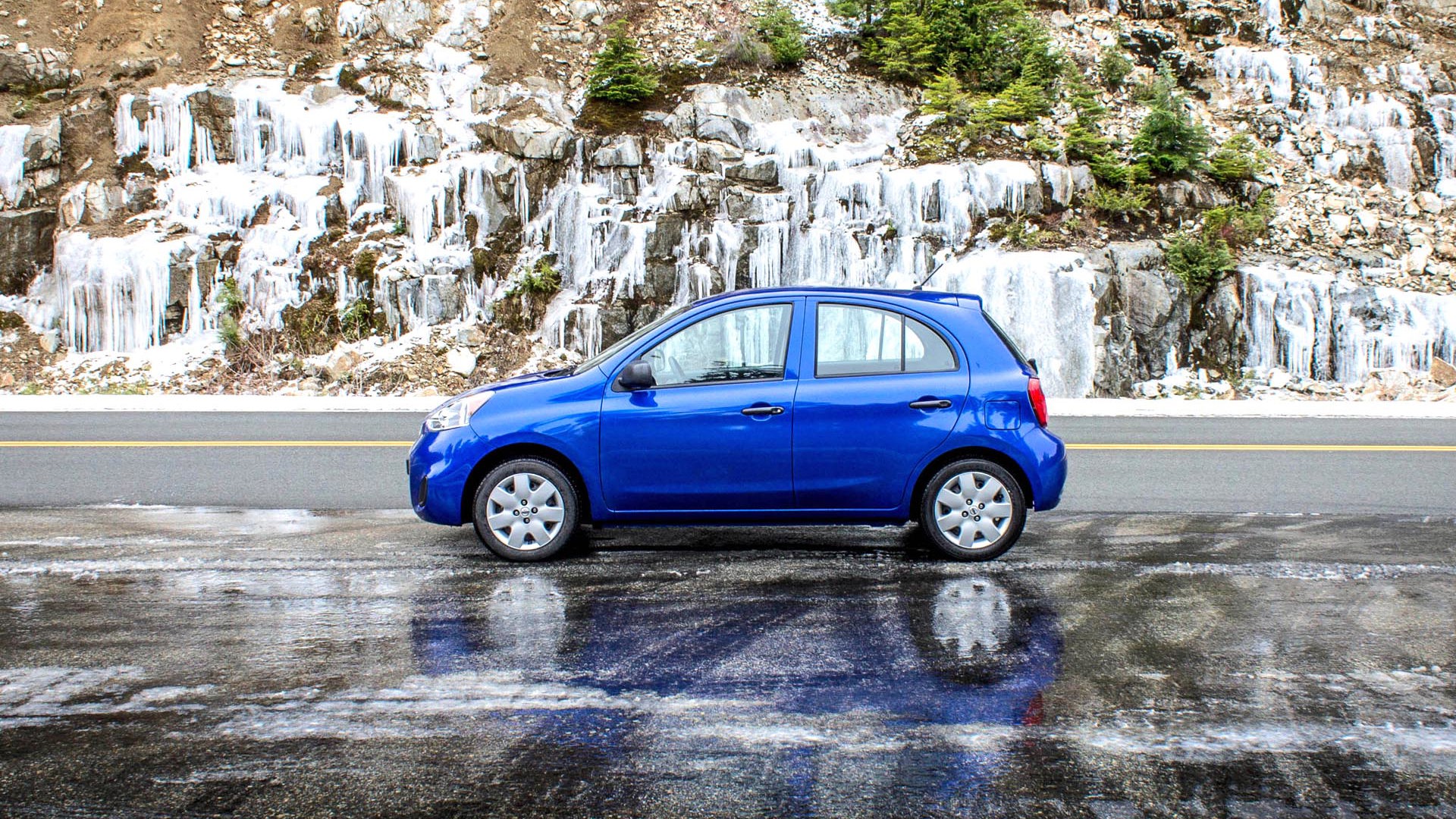You need space, capability, wintertime driving confidence, and flexibility to handle a wide range of combinations of people, pets and gear. Thing is, you don’t want to spend a whole truckload of your hard-earned cash, and relatively low fuel costs are a priority. Congratulations: you’re after a used thrifty ute.
Whether you’re planning to upgrade the family’s second vehicle from a compact car to a compact crossover on the cheap, or you’re trading in that few-year old sedan for a few-year old crossover that offers more space and traction, we’ve compiled a list of models worthy of your consideration where keeping costs low is key.
Check out any of the following models, and have your favourite mechanic do the same, before your purchase, for maximum confidence. A healthy example of any of the machines below can likely be found with reasonable mileage for well under $15,000.
Model: 2010 to 2015 Hyundai Tucson

The Gist: A fuel-efficient engine lineup, available AWD, a lengthy warranty and a decent selection of winter-busting features culminate in this machine, alongside decent-looking reliability and compelling used-car pricing. Reclining and heated second-row seats, a panoramic sunroof, rearview camera, “Supervision” gauges and more are all standard or available, depending on the model. Look for a 2014 or later to take advantage of a more efficient engine range, improved ride comfort, and numerous updates. Tucson’s ‘just-right’ sizing, cargo accommodations, driving feel, and storage space throughout the cabin are highly rated. Overall value, a comfortable ride, safety features, and fuel mileage are also commonly praised by owners.
The Test Drive: Rattles, clunks, or popping noises from the rear end, especially in cold weather, could be the result of a suspension bushing that’s worn, and allowing metal components to contact one another. Other unwelcome noises have been reported as a precursor to an under-warranty replacement of some suspension components, like the shock absorbers or shock mounts. If any unwelcome noises are detected on your test drive, be sure to have them investigated.
Check the automatic shift lever several times as you move it from Park to Drive to Reverse. Any issue shifting smoothly between positions, or unwelcome hesitation or clunking during shifts, may require attention to the shifter linkage, in the form of lubrication, adjustment or replacement. While shifting gears positions frequently, ensure your Tucson candidate’s backup camera (if equipped) works as expected, several times. Some owners have reported issues with non-functionality, possibly caused by a bad ground.
Hard shifting, lack of responsiveness, or random clunking from beneath the vehicle during shifts gearshifts are likely software and sensor-related in nature, possibly caused by a bad vehicle speed sensor, or a bad temperature sensor within the transmission. In any case, be sure to have any detected transmission issues, on a test drive or later, inspected at once.
Model: 2007 to 2015 Jeep Compass and Jeep Patriot

The Gist: We’ll lump this pair together, since they’re corporate cousins and feature a wide array of identical systems, components and features. Selection galore, competent four-wheel drive systems with lock mode, and a high level of feature content for the price were big draws to these machines, not to mention the promise of Jeep 4x4 capability for the up-front price of a compact car. Feature content included a sunroof, removable LED flashlight, premium audio, automatic climate control and more.
Both Compass and Patriot will, for the most part, be powered by a 2.4L four-cylinder engine in the used market. Depending on the year and model selected, automatic, manual or CVT transmissions were available. The available up-level sound system gets plenty of praise, as does ride quality on most models. Some fun-to-drive handling and car-like maneuverability are noted, and most owners (but not all) report satisfaction with the fuel mileage, too.
The Test Drive: Focus your ears on the front suspension, listening for any signs of clunking, popping or grinding while steering or traveling over bumps. Unwelcome sounds like these are likely indicators of a worn-out suspension component, and numerous owners have reported premature wear of these parts. Sway bar links, ball joints, tie-rods and bushings are typical culprits for less-than-stellar durability.
Ensure the brake system has plenty of life left in its components, as some owners have reported faster-than-expected wear from these parts, too.
Driveability issues with the CVT transmission, including reduced or sluggish acceleration, could be a computer-related problem which can be remedied by a dealer through a reboot of the computer brain that controls this component. There seem to be no rampant or systematic problems with the Japanese-built CVT transmissions being used in these models – though a few sporadic reports of blown units have come up.
Check the ceiling liner around the map lights, as well as carpeting in the front footwells, for signs of moisture-- which could indicate a leaky sunroof. Other checks include a visual scan of the power steering reservoir and pump to ensure no fluid is leaking, and listening for a high-pitched whine at speed on models with the CVT, which could be caused by a bad transmission mount. A mechanical pre-purchase inspection of the suspension, tires, brakes, and full vehicle underside is highly advised, here.
Model: 2009 to 2013 Subaru Forester

The Gist: With its elevated ride height, proven AWD system, box-shaped cargo area, great visibility and headroom galore, the Forester works exceptionally well for shoppers after a utility vehicle that’s big on space, flexibility and driving confidence. Expect to pay a premium in the used market for one of these: they sell for good prices even at higher mileage, likely as a result of the Forester’s reputation for reliability, safety and high residual values.
A standard model with five-speed manual and 2.5L engine will be the cheapest to own, and turbocharged models were available. Look for over 1,900L of cargo space, and note that owners tended to comment positively on fuel mileage, performance from the standard engine, the slippery-weather assurance of the AWD system, and laid-back, easy-to-drive character.
The Test Drive: Check for proper operation of the air conditioning system, as some owners have reported issues, possibly accompanied by excessive noise when the system is turned on.
Pop the hood and listen to the engine idle. A squealing or scraping noise from the front of the engine could be caused by a belt-tensioner pulley that’s starting to fail. The noise occurs when bearings within the pulley begin to wear, ahead of outright failure.
If the service history of the Forester you’re considering is unclear, be sure to budget for a full fluid change and tune-up. Finally, if you take the Forester you’re considering for a pre-purchase checkup, have the mechanic inspect the transmission/transaxle assembly and rear differential for signs of fluid leakage, which could be caused by leaky axle seals.
A few issues, though small, surfaced regarding durability. Some owners have complained of premature seat wear with the cloth seats, premature failure of the hydraulic tailgate struts, and excessive paint wear down low and behind the wheels, where sand and salt spray eat away into the paint. Finally, be sure to check the forward edge of the roof, and the area in and around where the sunroof parks, for excessive rusting.
Model: 2006 to 2012 Toyota RAV4

The Gist: Typically, you buy a RAV4 for the promise of reliability, high safety performance, high residual values, and all things sensible. Look for this generation of Toyota’s bread-and-butter utility vehicle with front or all-wheel drive (with locking function), power from a thrifty four-cylinder or a hot-rod v6, and no shortage of selection via numerous trim grades, options, and special packages. Model-year 2010 saw a facelift and numerous updates to equipment offerings. Two or three-row models were available, too.
Owners typically praise the comfy interior, car-like handling, acceleration performance with the V6, and wintertime traction and confidence on models with the 4WD system. Many owners say they feel ‘safe’ driving their RAV4 in snow. Interestingly, several even commented positively on the effectiveness of the climate control system and the legibility of the instrument cluster.
The Test Drive: Ensure there’s no unexpected rust, denting, peeling of paint or other visible damage. Be sure to check for rust on the inside, lower edges of all doors, and the tailgate.
Be sure all electronics work as expected – paying special attention to the automatic climate control system, all windows, and the power seats and sunroof. On models with a sunroof, press your hand or a rag into the front footwell carpeting, under the floor-mats, to check for signs of moisture which could result from a leaky or plugged sunroof drain.
Find a place to drive at low speeds and make plenty of turns. You’re checking for a well-documented problem with the RAV4’s steering system, likely caused by a faulty steering shaft. Turning moderately, and at fairly low speeds, and listen for a clunking, popping or knocking sound. If it’s present, call it into pricing negotiations and arrange to have the problem checked by a Toyota dealer – who will be familiar with it.
Be sure a mechanic also inspects the RAV4’s rear suspension for signs of excessive rust that could be caused by an improperly aligned or improperly installed bolt.
Note that the 3.5L V6 had a well-documented problem with external oil lines that may rupture and break, spewing engine oil all over everything but the important stuff inside the engine. If this happens to your RAV4, you’ll experience anything from a giant mess to a blown engine. Note that this problem applied mainly to earlier models. Your local dealership can determine if the RAV4 you’re considering may be at risk of this issue, and can make necessary repairs.
Model: 2009 to 2015 Volkswagen Tiguan

The Gist: Thrifty and punchy, Volkswagen Tiguan packed a standard turbo engine, heaps of refined low and mid-range torque, and a performance advantage over numerous four-cylinder-only competitors. Available in front-wheel drive with a manual or automatic transmission, and 4Motion All Wheel Drive (AWD) with a six-speed automatic, Tiguan is a logical used-ute choice for a shopper after a touch more performance and upscale driving feel than the norm in the segment. Look for an up-level Dynaudio stereo, xenon lights, Bluetooth, navigation, power seats, push-button start and more on Tiguan’s options list.
Tiguan is on the compact size of the crossover spectrum, and the cargo hold is relatively tight compared to larger models. Still, where driving pleasure takes priority over all-out space, many a Tiguan owner says this machine hits the mark.
Common owner praise-points for the Tiguan (AKA ‘Tigger’ or ‘Tiggy’) include a quiet ride, comfortable cabin, taut handling, upscale interior trimmings and an overall feel of solid and dense quality.
The Test Drive: Start with a scan of the engine’s computer at a VW dealer: this is a good idea on any used ride, though many Tiguan owners have reported issues with ignition coil packs, sensors, or even a build-up of valve gunk causing poor performance, sporadic power delivery and other issues, most of which will either cause a check-engine light to illuminate, or a ‘trouble code’ to be stored in the computer.
Confirm proper operation of the Tiguan’s xenon lighting system too, if equipped. Xenon lights last longer than halogen lights, though they’re pricier to replace when they do burn out.
Though infrequent, some owners have reported issues with the Tiguan’s cooling system – so have a VW mechanic inspect the level and condition of its engine coolant, and check for signs of coolant leakage, which could indicate a water pump that’s nearing the end of its life.
Check for signs of wet or musty carpeting on the floor of the Tiguan you’re considering, which could be evidence of a leak caused by plugged sunroof drain tubes, or what appears to be an issue with leaky door seals, or a plugged drainage system within the doors that fails to channel water outside in heavy rain.
Model: 2007 to 2011 Honda CR-V
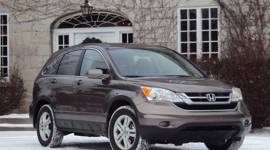
The Gist: For years, the Honda CR-V has been one of Honda’s top-selling models, and a powerful entry to the compact crossover segment. With four-cylinder power on all models, a reputation for reliable and fuel-efficient performance and plenty of flexible utility, it was a machine that connected well with Canadian families.
Look for the five-seat crossover with features like heated leather, a sunroof, navigation, Bluetooth, automatic climate control and available ‘Real Time’ four-wheel drive. A five-speed automatic was included on all models. The CR-V’s naming convention saw lower-end models wearing the LX badge, while EX, EX-L and EX-L Navi models filled the range. All models got a 2.4L four cylinder, with 166 or 180 horsepower, depending on the year.
The Test Drive: Have a mechanic inspect the CR-V’s brakes, ensuring they have plenty of life left. While the vehicle is in the air, said mechanic can also check the underside for signs of damage or fluid leakage.
Some owners have complained of oil consumption. Some amount is considered normal on virtually every vehicle – though test drivers are advised to check the CR-V’s oil level and condition, and ensure the seller was fond of frequent, high-quality oil changes.
Triple check for proper operation of the locks and door handles on all doors, and the hatchback as well. Also, note that the air conditioning system should blow ice-cold air almost instantly after it’s engaged. If that’s not the case, a bad AC compressor may be to blame.
A light, metallic rattle coming from beneath the vehicle may be caused by a rusty or loose catalytic converter heat shield, which some owners simply remove to stop the noise.
Ensure all fluid changes are up to date, and note that a ‘whining’ noise during steering at low speeds could be caused by a worn-out power steering pump, or low power steering fluid level.
Model: 2008 to 2012 Ford Escape

The Gist: Selection, style and capability were arguably the biggest draws to the last-generation Ford Escape. With four and six-cylinder power, front or four-wheel drive, generous ground clearance and a large array of options and packages, this Canadian favourite offered a variation that was just right for virtually any shopper.
Opt for a 2009 or newer model where possible, to take advantage of an updated engine range which offered a 2.5L four-cylinder and a punchy 3-litre V6. Power output was rated at 171 and 240 horsepower, respectively. A six-speed automatic was standard on all models. Feature content included heated leather, Ford Sync, steering-wheel audio controls, heated leather, a sunroof, and automatic climate control.
The Test Drive: Hard shifting, ‘flaring’ or slipping during gear changes could all be signs of transmission trouble. Ensure the unit shifts between Drive and Reverse as quickly as you’d expect, too. Signs of transmission trouble in a used Escape are likely a problem with the transmission itself, not its computer controls. If you note any, move to another unit. Because of this, and another documented issue with a transmission cooler leak, a Ford mechanic should check out the transmission on any used Escape you’re considering, even if no trouble signs are apparent.
Shoppers are also advised to check the Escape’s paint for signs of peeling or rust, ensure the air conditioner works properly, and have the tires checked for signs of excessive wear or alignment issues.
Also, be sure to inspect the engine, particularly the V6, for oil level, condition and signs of oil leakage. On models with the automatic four-wheel drive system, the transfer case and rear differential should be checked for leaks, too. Finally, run all interior electronics through their paces, paying particular attention to the Ford Sync system.
